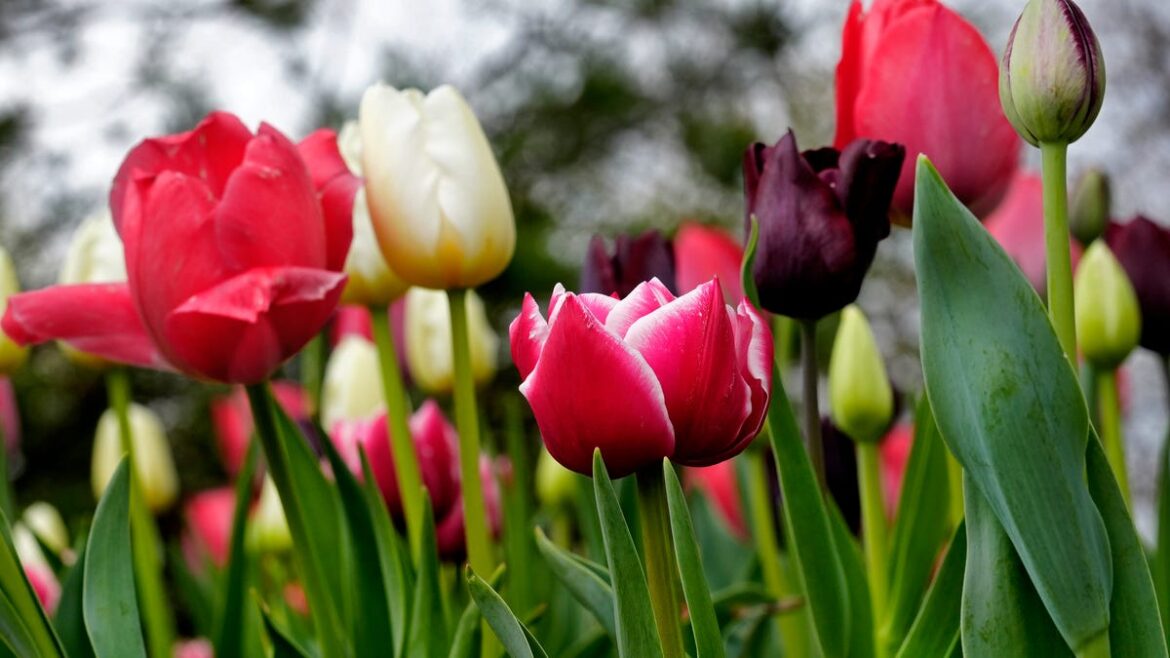Chris McKeown
| Special to The Enquirer
Since I have been involved in the gardening business for the majority of my life – which has been a very long time – I find myself reminiscing more and more each year. When I was growing up in the business, the planting of spring flowering bulbs was a gardening tradition everyone enjoyed.
I can say that was literally in the last century. Since then, the tradition has declined more and more each decade. My thoughts on the reason for this would be an increasing demand for what is referred to as instant gratification. Today no one has the desire or patience to spend time digging holes then have to wait six months for the flowers.
If this description fits your personality, I think you might want to consider this. The wait and the anticipation will also grow your appreciation for the spectacular blooms.
Tulips and daffodils are the most popular spring flowering bulbs, but there are others. Spring-flowering bulbs require a long period of cool temps to process a chemical reaction inside of the plant to produce the blooms.
If you might be considering planting some bulbs this fall, here are some tips.
1. Want the most color? Plant tulips
Tulips are definitely the most colorful of all of the spring flowering bulbs. You can find a tulip in almost any color in the rainbow. The problem with tulips – and it is a big one – is they are like candy to deer. The deer grazing your neighborhood will be watching your tulips as they emerge out of the ground. They will be there the day when the flowers open up, and they could be gone before you ever see them. When you plant tulips, you will need to have a deer repellent ready to go as the flower buds start to form.
2. Want to keep away deer? Plant daffodils
If you want spring flowers but you do not want to have to worry about the deer, plant daffodils. Daffodils are poisonous to deer, and they know it. They will not eat daffodils. With daffodils, you are limited to shades of yellow, orange and white. While you are limited in colors, you will not have to worry about the blooms being eaten.
3. For early spring color, plant crocuses or snowdrops
For early spring color, you can plant crocuses or snowdrops. Muscari, also known as grape hyacinths, are low growing. They are great for creating a colorful border.
4. Create interest with alliums
There are also some bulbs that can create interest in the garden with their unusual flowers. Alliums produce large, sphere-shaped lavender flowers on tall stalks. Large growing fritillaria are also great for adding fragrance to the garden.
5. For a sweet-smelling garden, plant hyacinths
There are also bulbs you can plant for adding fragrance to the landscape in the spring. The best are hyacinths. These come in shades of pink, blue and white. Hyacinths will also attract deer.
Spring flowering bulbs can give you the opportunity to be very creative. Different bulbs bloom at different times. Even with tulips and daffodils there are different varieties that bloom at different times. Be sure to get a good mix so you can maximize the time you have the colorful blooms.
Bonus: Use repellent to keep critters away
Wildlife does create challenges when you want to have beds full of spring flowering bulbs. I have already warned you about deer which is the biggest challenge. Another problem is the chipmunks and squirrels, who will dig up and eat your bulbs.
To reduce the threat of these animals ruining your bulb planting, you can use Fertilome’s all-purpose animal repellent called Critter-Go. I have successfully used this product to keep chipmunks from digging around our stone patio. Squirrels are also listed on the label. To keep the animals away, simply spray the soil above the bulbs every three to four weeks. When they smell the repellent, they will go someplace else to look for food.


Comments are closed.